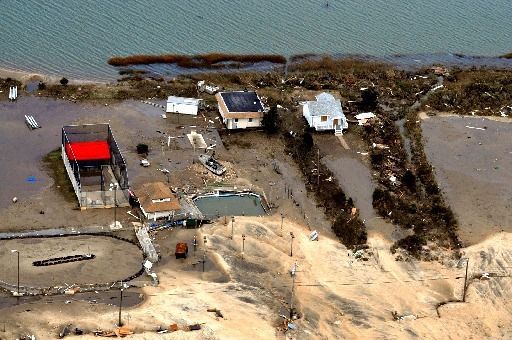
Sandy's Aftermath & Legacy Take Center Stage in 'Nova' Show

With the anniversary of Superstorm Sandy's devastating hit to the U.S. Northeast approaching, PBS' science documentary show "NOVA" looks at the storm's impact and how damage from a similar storm can be reduced in the future. It also examines how climate change is likely to impact hurricanes and their effects. The episode, entitled "Megastorm Aftermath," will debut tonight (Oct. 9) at 9 p.m. ET.
The worst effect of Sandy was the storm surge, the water that a storm's winds push in front of it and that inundate a coastline as the storm makes landfall. This storm surge flooded areas from Coney Island to the Jersey Shore. The wall of water in New York measured 14 feet (4.3 meters) above sea level. The torrent flooded a major electrical substation at East 14th Street, knocking out power to much of Lower Manhattan below 34th Street. But as the "NOVA" shows documents, the station has now made all of their electrical equipment waterproof, and added a series of doors to the facility to protect it from another storm surge 2 feet (610 centimeters) higher than Sandy's. [Video: Preview of NOVA's 'Megastorm Aftermath']
The program also explains why Verizon customers couldn't get service in many places in the area after Superstorm Sandy: Water rushed into the company's building on Manhattan's West Side, destroying landlines made of copper wire, as well as enveloping a pump that provided fuel to backup generators upstairs. Now, Verizon has spent $1 billion on Sandy-related repairs, replacing copper wires with fiber optic cables — which are impervious to moisture — and making their pump waterproof.
Billons in damages
After withstanding about $5 billion in damages, New York's Metropolitan Transportation Authority has implemented some measures to protect against future storms, such as building higher walls around entrances to subways and tunnels. Engineers have also experimented with inflatable plugs to fill channels in the event of storm surges. New York Mayor Michael Bloomberg also announced an initiative to build seawalls and make more electrical components of the city's infrastructure waterproof.
But will it really be enough to prevent against future storms? It depends who you ask, but experts generally agree that it won't be enough, because sea level rise is actually accelerating on the U.S. East Coast, and is not expected to go down, said Klaus Jacob, a researcher at Columbia University's Lamont-Doherty Earth Institute.
"Climate change will raise the sea level, and sea level will contribute to the power of flooding," he said during the "NOVA" episode.
Sign up for the Live Science daily newsletter now
Get the world’s most fascinating discoveries delivered straight to your inbox.
Furthermore, hurricanes are expected to become more violent with global warming, MIT researcher Kerry Emanuel told "NOVA. "
Keeping out the water
Some researchers have begun thinking about drastic ways of keeping out rising levels of water in the event of storms like Sandy. The "NOVA" show turns to the Netherlands to see how people there have coped with living below sea level for hundreds of years.
"As a Dutchman, you are quite surprised to see a large city like New York, so many people exposed, and no levies, no protection at all — [that] was astonishing to me," Jeroen Aerts, a professor of risk and water management at the University of Amsterdam told "NOVA."
Aerts has proposed creating large structures like those seen in the Netherlands to keep out water in the event of a huge storm and continued sea level rise. His proposals include building a waterproof seawall, paired with an enormous retractable entranceway, across the Verrazano Narrows, the narrowest part of the strait between Staten Island and Brooklyn. But this and the other necessary structures would cost tens of billions of dollars, and there are no immediate plans to build these, experts on the show said.
The show also looked at the downsides of building big structures to keep water out, as has been done in the Netherlands and the mouth of the Mississippi River. Most importantly, preventing some intermittent flooding destroys tidal marshes that actually provide natural protection against hurricanes. "NOVA" interviewed several researchers who said the best approach to protecting the New York area — and the Northeast — from future hurricanes is to find a balance between building hard structures like seawalls or dikes and protecting or enlarging natural marshes, besides avoiding building homes and other infrastructure in low-lying areas.
Email Douglas Main or follow him on Twitter or Google+. Follow us @OAPlanet, Facebook or Google+. Original article on LiveScience's OurAmazingPlanet.












